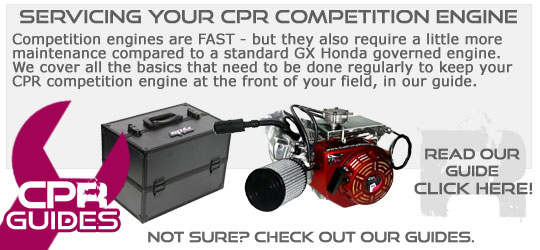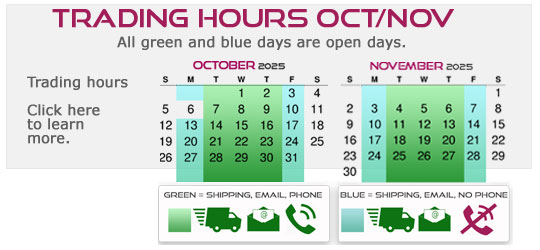CPR Stage 1 and Stage 2 Engine Maintenance & Service Plan
CPR Stage 1 and Stage 2 Engine Maintenance & Service Plan

If you're running a CPR engine, you'll be one of the lucky group of succesful karters. Built tough and reliable with performance as number 1 prioirity, each of our CPR Competition engines are the perfect engine when you're running within a modified 200cc class.
Looking for run-in procedures? Find the correct way to run in the engine by clicking here
If your engine looks similar to the one in the picture above, then this guide applies to you.
We're sure your thrilled with the performance and reliablity of your new engine (and we're told this every day by customers with the widest grins). Our technical engine specialist has created this list of checks & maintenance schedule to keep your engine running in tip top condition for loads of races.
1. Things to check / tighten regularly
- After every race be sure to check chain tension and lube your chain
- After every race it is good practice to lubricate the clutch slipper bearing with oil (being careful not to let oil onto the clutch shoes or drum)
- Check your engine oil level
- Check tension of all fastners on the engine (things like pull starter cover, clutch retaining bolt, throttle linkage etc)
2. Service intervals
Engine being used under racing conditions should be serviced more reguarly due to higher strain on engine.
- After every race meeting (normally 5 races) i reccomend to perform the following checks:
- Change engine oil with a good quality engine oil like the genuine honda oil available from us (oil levels for CPR engines can be found by clicking here)
- Check engine for any oil leaks
- Check engine valve clearences and for any signs of wear to valve train components (stage1 & stage2 inlet = 3 thousanths of an inch, exhaust = 4 thousanths of an inch with 1 thou tolerance)
- Check spark plug condition
- Remove clutch, clean and lube slipper bearing, clean drum and shoes of debris
- Check chain and sprocket condition and tension
- Clean and re-oil airfilter element (this may need to be done more regurarly in dusty conditions)
- Inspect all engine fastners (nuts, bolts, washers etc) - Side plate bolt torques: 27nm (find the rest of the bolt torques for non-performance components by clicking here)
- Start your engine after all this and check operation
If engine is being used for recreational use i reccomend to check the following:
Each use:
- Check engine oil level (oil levels for CPR engines can be found by clicking here)
- Check airfilter condition
- Check for any loose fastners
- Check chain adjustment and lube
- Lube chain and clutch slipper every .5-1hr of use (more regurarly if in dusty conditions)
Every 5hrs:
- Change engine oil every with a good quality engine oil like the genuine honda oil available from us (oil levels for CPR engines can be found by clicking here)
- Check engine for any oil leaks
- Check engine valve clearences and for any signs of wear to valve train components
- Check sparkplug condition
- Remove clutch, clean and lube slipper bearing, clean drum and shoes of debris
- Check chain and sprocket condition and tension
- Clean and re-oil airfilter element (this may need to be done more regurarly in dusty conditions)
- Inspect all engine fastners (nuts, bolts, washers etc)
- Start your engine after all this and check operation
- Valve Clearances (All CPR Competition Engines including ST1, S1, S2, S3, RS2, RS3) inlet = 3 thousanths of an inch, exhaust = 4 thousanths of an inch with 1 thou tolerance
- Head Bolt/Nut Torque (All CPR Competition Engines including ST1, S1, S2, S3, RS2, RS3) = 18lb-ft (25Nm)
- Conrod Bolt Torque (All CPR Competition Engines including ST1, S1, S2, S3, RS2, RS3) = Cap bolt torques ~ 150in/lbs (moly lube on threads) or ~170in/lbs (oil on threads)
- Conrod Journal (Oil Gap) Clearance = Oil gap clearance < 0.004" and greater than 0.002"

















